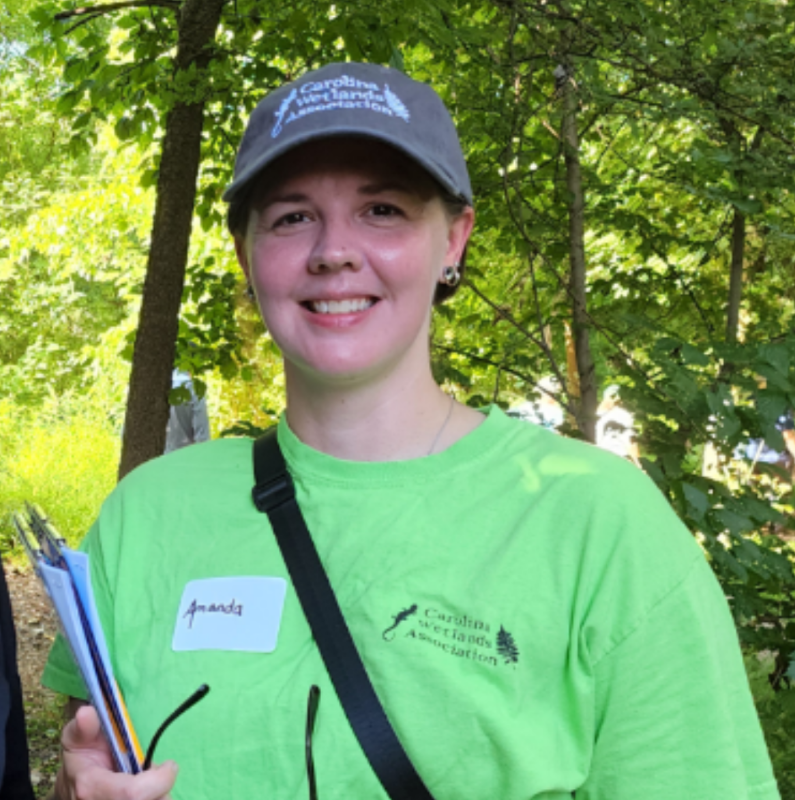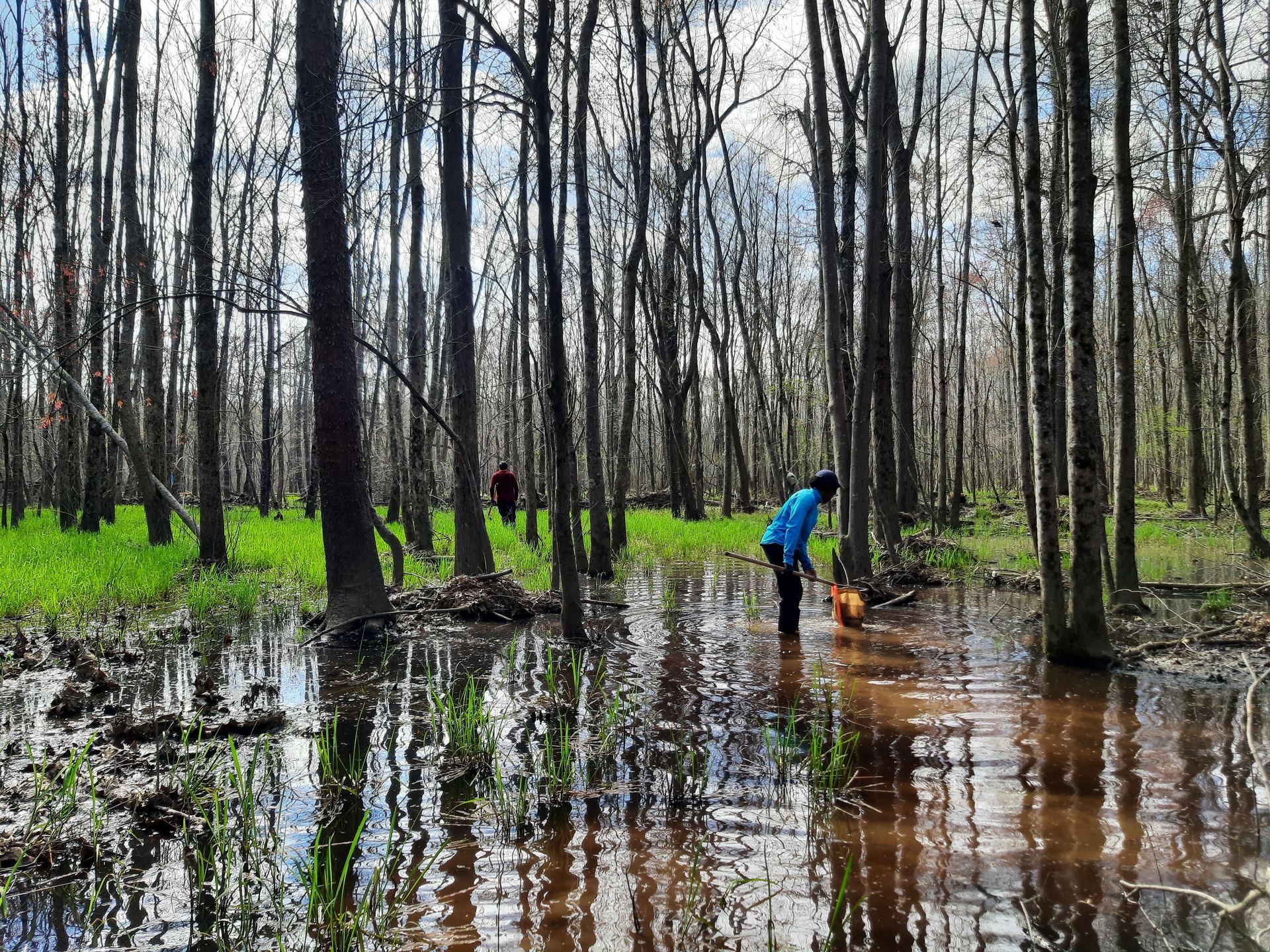Amanda Johnson
Senior Environmental Scientist at Timmons Group
Project Coordinator

Amanda Johnson
Senior Environmental Scientist at Timmons Group
Project Coordinator
Where did you grow up and if not the Raleigh/Durham area, what brought you here?
I grew up in central Florida and moved to Waynesville, North Carolina when I was in middle school. I went to college at the University of North Carolina Wilmington (UNCW). I moved to Raleigh for graduate school and really enjoyed the Piedmont. I moved back to Wilmington after school but decided to come back to Raleigh to be closer to my family and for better job opportunities.
Where did you go to school and what led you to your career?
I received a Master of Natural Resources degree from North Carolina State University (NCSU). While earning my degree, I had an internship and then eventually a seasonal position with the North Carolina Division of Water Quality (now Division of Water Resources) where I learned about wetlands, streams, and wetland mitigation sites. I decided I wanted a career where I can work in the field, so I pursued a job as an environmental consultant.
Could you tell us about your job at Timmons Group?
I work as a Senior Environmental Scientist at Timmons Group where most of my work is focused on wetland and stream delineations and functional assessments, protected species habitat surveys, and Clean Water Act Section 401/404 permitting.
What sparked your interest in your area of expertise?
As a child, I loved playing outside and thought I wanted to be a zookeeper. While I was in high school, I had a science teacher that inspired me to study environmental science. He encouraged me to apply for a summer internship with the National Park Service, which I got. We studied salamanders, snakes, Vesper Sparrows, moths, planthoppers, and ozone effects on plants. I was hooked on environmental science. During my senior year at UNCW, I learned about wetland restoration and thought it was fascinating, so I decided to study restoration ecology at NCSU. My internship during graduate school gave me fieldwork experience, which set me up for my first job as an environmental consultant at a small firm in Wilmington.
What do you enjoy most about your role in the VWMP? What is your favorite memory so far working in the wetlands with the VWMP volunteers?
I have really enjoyed establishing protocols for data collection and exploring the capabilities of different platforms, such as Wildnote and iNaturalist, to record our data. We have worked so hard to get the VWMP going, so it is wonderful seeing our volunteers in the field asking questions, collecting data, and having a good time. It was no surprise that our volunteers loved our amphibian surveys, but I must say, I was amazed at how much our volunteers were interested in learning about soils and getting their hands dirty at our sampling event in December 2022. I am looking forward to our next sampling events in 2023!

All Rights Reserved | Carolina Wetlands Association